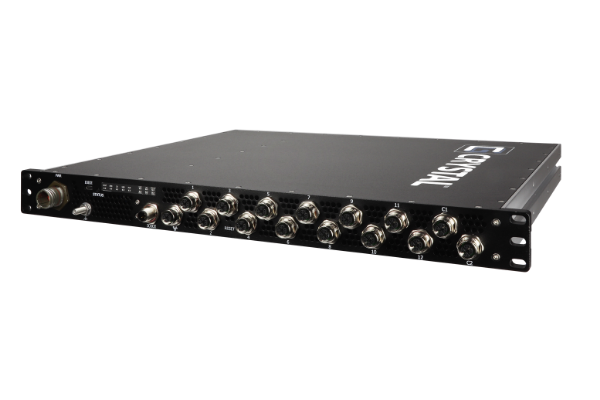Power over Ethernet (PoE) is a technology that allows network devices to be powered over the same Ethernet cable that carries data. This eliminates the need for separate power cables and power sources, simplifying installations and reducing cable clutter.
There are three main PoE standards:
- PoE (802.3af):This is the original PoE standard and provides up to 15.4 watts of power per port.
- PoE+ (802.3at):This standard provides up to 30 watts of power per port.
- PoE++ (802.3bt):This is the latest and most powerful PoE standard and provides up to 100 watts of power per port.
Let’s take a closer look at PoE vs PoE+ vs PoE++ to help determine which technology best fits your needs.
What is a PoE Switch?
A Power over Ethernet (PoE) switch (commonly called a PoE, Type 1) is a network switch that is equipped with the capability to deliver both data and electrical power over Ethernet cables to connected devices. This eliminates the need for separate power cables and power sources for those devices, simplifying installations and reducing cable clutter.

Key PoE (802.3af) Specifications:
- Power Delivery: Up to 15.4 watts per port.
- Voltage: 44-57 volts DC.
- Current: Up to 350 mA.
- Total Power Budget: Typically 12.95 watts (after power loss considerations).
- Notable Applications: Phones, basic cameras, access points, switches, accessory edge devices.
What is a PoE+ Switch?
A PoE+ switch (commonly called a PoE, Type 2 switch) is a type of network switch configured to support the IEEE802.3at standard. POE+ offers higher power delivery compared to the original POE (802.3af) standard.
Key PoE+ (802.3at) Specifications:
- Power Delivery: Up to 30 watts per port.
- Voltage: 50-57 volts DC.
- Current: Up to 600 mA.
- Total Power Budget: Typically 25.5 watts (after power loss considerations).
- Notable Applications: Wireless access points, advanced IP cameras, some VoIP phones.
What is a PoE++ Switch?
A PoE++ switch is a type of network switch that supports the latest and most powerful Power over Ethernet (PoE) standard, known as PoE++. This standard is defined by the IEEE 802.3bt specification. There are two types of PoE++ switches: Type 3 and Type 4.
PoE++ switches are ideal for scenarios such as deploying advanced surveillance systems, high-performance wireless networks, and industrial automation systems.
Key POE++ (802.3bt) specifications:
- Power Delivery (Type 3): Up to 60 watts per port.
- Power Delivery (Type 4): Up to 100 watts per port.
- Voltage: 50-57 volts DC.
- Current (Type 3): Up to 960 mA.
- Current (Type 4): Up to 1,400 mA.
- Total Power Budget: Depends on switch and configuration.
- Notable Applications: High-performance access points, PTZ cameras, advanced IoT devices.
How to choose between POE, POE+ and POE++
Choosing between POE, POE+, and POE++ depends on the specific power requirements of your network devices and the capabilities of your network infrastructure. Here are some steps to help you make an informed decision:
- Determine Power Needs: Assess the power requirements of the devices you intend to power over Ethernet. Different devices have varying power consumption levels. Make a list of devices and their corresponding power needs in watts.
- Check Device Compatibility: Verify whether your devices are compatible with POE, POE+, or POE++. Some devices might only support specific POE standards. Check the manufacturer’s specifications or documentation to confirm compatibility.
- Consider Future Growth: Think about potential future additions or upgrades to your network. If you expect to integrate higher-powered devices down the line, it might be wise to invest in a higher POE standard now to accommodate those needs.
- Assess Network Switch Capability: Check if your network switch supports the POE standard you’re considering. Not all switches support all POE standards. Make sure the switch can deliver the required power levels to the devices you plan to connect.
- Evaluate Cable Length and Voltage Drop: Keep in mind that longer Ethernet cable runs can lead to voltage drop and power loss. Higher-powered devices may require higher voltage levels to compensate for this drop. Consider the cable length between the switch and the powered devices.
- Budget Considerations: POE++ equipment might be more expensive than POE or POE+ alternatives. Evaluate your budget constraints and balance them with the power needs of your devices.
- Plan for Redundancy and Failover: If power continuity is critical for your network devices, consider redundant power sources or uninterruptible power supply (UPS) solutions. This may influence your choice of POE standard.
- Consult with Professionals: If you’re unsure about which POE standard to choose, consult with IT professionals, network engineers, or vendors who specialize in networking equipment. They can provide valuable insights based on your specific use case.
- Review Standards Evolution: Keep in mind that technology evolves. While POE++ might provide more power, future standards could potentially offer even higher power capacities. Consider the longevity of your infrastructure when making a decision.
In general, if you’re planning to power devices with higher power requirements or anticipate future expansion of your network, choosing a higher POE standard (such as POE+ or POE++) might be beneficial. However, always make sure to verify compatibility, assess the capabilities of your existing infrastructure, and consider your specific needs before making a decision.
Why Crystal Group?
- We’ve partnered with Commscope for all POE needs/requirements
- All our switches support POE
- Learn more about our partnership with Commscope.